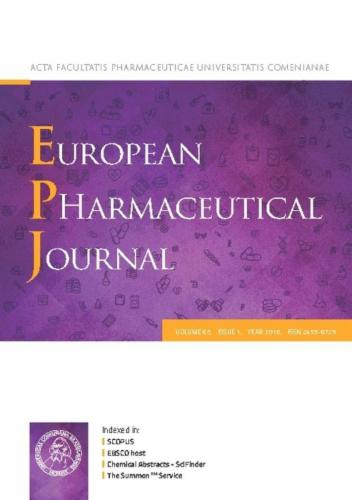Guiding excipient selection for physically stable amorphous solid dispersions: A combined in-vitro in-silico approach
IF 4.7
3区 医学
Q1 PHARMACOLOGY & PHARMACY
引用次数: 0
Abstract
Fast screening of amorphous solid dispersions (ASDs) is a need in the pharmaceutical industry. To support this, several emerging technologies have been developed ranging from in-silico prediction to miniaturized high-throughput experimentation. However, a notable challenge lies in the absence of comparative data. In the present work, a combination of a miniaturized screening of ASDs with calculation of activity coefficients using the conductor like screening model for real solvents (COSMO-RS) was proposed. First, the physical stability of ASDs comprising drugs of different glass forming ability (GFA) each with ten pharmaceutically relevant polymers was evaluated under accelerated stress conditions at two drug:polymer ratios. The miniaturized high-throughput screening method was based on the instability onset time that was monitored by polarized light microscopy (PLM). Furthermore, COSMO-RS was used to assess the interaction strength between the drugs and polymers by calculating activity coefficients, which was combined with estimations of the wet glass transition temperature (Tg), to account for molecular mobility. The computational calculations showed an overall alignment of 87 % with the instability of the ASDs observed experimentally for comparable drug:polymer ratios and humidity conditions. This positive result supports the current understanding of stable ASD formulation where at given ambient conditions, a low molecular mobility as well as the strength of interaction between drug and polymer has a main impact on the physical stability of ASDs. The current results are further encouraging to implement such a combined in-vitro/high-throughput (HTS) and in-silico strategy in early industrial screening of ASDs.

物理稳定的非晶态固体分散体的指导赋形剂选择:结合体外硅化方法。
快速筛选非晶固体分散体(ASDs)是制药行业的需求。为了支持这一点,已经开发了一些新兴技术,从硅预测到小型化的高通量实验。然而,一个显著的挑战在于缺乏比较数据。在本工作中,提出了一种将asd的小型化筛选与计算活度系数相结合的方法,该方法采用了真实溶剂的导体筛选模型(cosmos - rs)。首先,在加速应力条件下,在两种药物与聚合物的比例下,评估了由不同玻璃形成能力(GFA)的药物和10种药学上相关的聚合物组成的asd的物理稳定性。小型化的高通量筛选方法是基于偏振光显微镜(PLM)监测的不稳定开始时间。此外,COSMO-RS通过计算活度系数来评估药物与聚合物之间的相互作用强度,该活度系数与湿玻璃化转变温度(Tg)的估计相结合,以解释分子迁移率。计算结果表明,在类似的药物:聚合物比例和湿度条件下,asd的不稳定性与实验观察到的asd的总体一致性为87%。这一积极的结果支持了目前对稳定的ASD制剂的理解,在给定的环境条件下,低分子迁移率以及药物和聚合物之间的相互作用强度对ASD的物理稳定性有主要影响。目前的结果进一步鼓舞了在asd的早期工业筛查中实施这种体外/高通量(HTS)和芯片相结合的策略。
本文章由计算机程序翻译,如有差异,请以英文原文为准。
求助全文
约1分钟内获得全文
求助全文
来源期刊
CiteScore
9.60
自引率
2.20%
发文量
248
审稿时长
50 days
期刊介绍:
The journal publishes research articles, review articles and scientific commentaries on all aspects of the pharmaceutical sciences with emphasis on conceptual novelty and scientific quality. The Editors welcome articles in this multidisciplinary field, with a focus on topics relevant for drug discovery and development.
More specifically, the Journal publishes reports on medicinal chemistry, pharmacology, drug absorption and metabolism, pharmacokinetics and pharmacodynamics, pharmaceutical and biomedical analysis, drug delivery (including gene delivery), drug targeting, pharmaceutical technology, pharmaceutical biotechnology and clinical drug evaluation. The journal will typically not give priority to manuscripts focusing primarily on organic synthesis, natural products, adaptation of analytical approaches, or discussions pertaining to drug policy making.
Scientific commentaries and review articles are generally by invitation only or by consent of the Editors. Proceedings of scientific meetings may be published as special issues or supplements to the Journal.

 求助内容:
求助内容: 应助结果提醒方式:
应助结果提醒方式:


